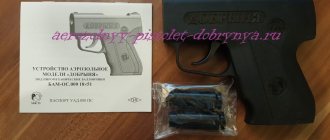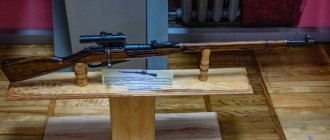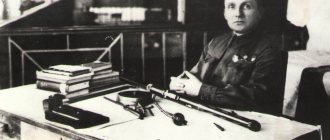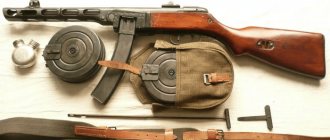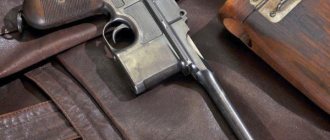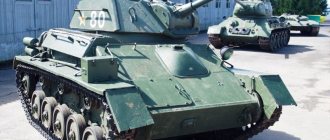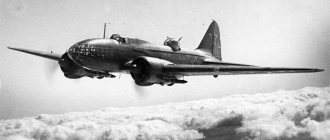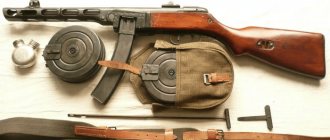Artillery – “God of War”
The branch of the military that is proudly called the “God of War” is artillery! Despite the fact that in recent decades there has been a dynamic development of missile weapons, the role of high-precision barrel systems is great and does not lose its position. The first mention of the use of cannon artillery dates back to 1324. It cannot be ruled out that perhaps barrel artillery was used earlier this year, but the papers found in the archives indicate precisely this date. For a long time it was believed that the “father” of guns was the German Schwartz. Therefore, until some time the Germans were given the palm in the invention of the first artillery pieces. But numerous references to artillery pieces were found in ancient manuscripts of the British, and not in German primary sources.
And in a treatise of 1326, which was written to glorify Edward the Third, one can find sketches of a cannon that looks like a large vase. An arrow flies out of its neck, and next to it is an English knight holding a red-hot rod in his hand to ignite gunpowder. The treatise was written by the teacher of King Edward the Third. But, if you go further and figure it out, then with the invention of gunpowder in China, and medieval alchemists discovered gunpowder three times, the first artillery pieces could have already appeared. Therefore, it can be assumed that artillery has a more ancient origin than is officially believed. Ancient artillery pieces often changed history, bending the tide of war in favor of whichever state was involved in the battle. And even if they were imperfect, for that time it was still a formidable weapon. Giant cannons and periers, falconets and minions, robinettes, mortars and bombards - and this is not a complete list of all artillery pieces, but only a small part of it that has survived to this day. They have become truly historical artifacts of past wars.
Story
It is known that shooting from closed positions was already used in the Crimean War of 1853-1856, when, due to the mountainous terrain and powder smoke, direct observation of targets became impossible. Then these were simple voice commands from observers to artillerymen - “take to the left”, “undershot”, etc. Subsequently, the development of this shooting method was based on the active involvement of mathematics to improve observation and calculation methods.
During the Russian-Japanese War of 1904-1905. Russian artillerymen were the first to use indirect shooting (using a protractor and a panorama)[1]. In addition, during the Russo-Japanese War, this method of firing was actively used by the Japanese.
At the beginning of the twentieth century, armored posts were widely used to protect observers[2].
A formidable weapon - a cannon
These modern artillery pieces no longer have anything in common with their medieval predecessors - clumsy, heavy, with very low accuracy and a high risk of barrel rupture. The caliber of the latest installations reaches 155 mm, and the range of projectiles and their accuracy of aiming at the target is amazing. The Russian Sprut-B has a 125 mm projectile caliber with a firing range of more than 12 thousand meters. A Chinese gun with a 155 mm projectile caliber hits a target at a distance of up to 40 thousand meters. It is practically an analogue of the GHN-45 and GC 45 guns produced in Belgium.
The British fired a cannon with a 140 mm projectile caliber and a firing range of up to 16 thousand meters. And subsequently this type of weapon was removed from service. Israel has created the Zoltam M-68/M-71 cannon with a 155 mm projectile caliber and a firing range of up to 21 kilometers. South Africa has released a powerful artillery gun, the G5, with a projectile caliber of 155 mm and a firing range of up to 30 kilometers. It is impossible not to note the gun released in the Soviet Union. This is the Rapier anti-tank artillery gun, which is still in service with the Russian army. This gun has a projectile caliber of 100 mm and a firing range of three kilometers.
Modern salvo systems
The leader of artillery pieces today is the Russian Tornado gun. The caliber of the projectile is 122 mm and is fired at a distance of up to 100 thousand meters. Fires up to 40 charges in one salvo. The area covers up to eighty-four thousand square meters. High chassis reliability. The speed of the Russian gun is 60 kilometers per hour. Covers distances of 650 kilometers. All these characteristics of the weapon allow it to be transferred to the desired location in a fairly short period of time.
In second place of honor in terms of efficiency are the Russian 9K51 Grad MLRS. Has 40 barrels. The caliber of the projectile is 122 mm. The gun's firing range is up to twenty-one thousand meters. In one salvo, it “covers” up to 40 thousand square meters of area. The Grad's speed is up to 85 kilometers per hour. At maximum speed, the installation covers a distance of one and a half thousand kilometers.
The third position was rightfully occupied by the HIMARS artillery gun, produced by American specialists, due to its technical characteristics. The caliber of the 227 mm projectile is literally impressive. But only six projectile guides spoil this impression. Firing range up to 85 thousand meters. One salvo of this weapon, manufactured in the USA, covers an area of 67 thousand square meters. The gun reaches speeds of up to 85 kilometers per hour. HIMARS can cover a distance of 600 kilometers. This artillery piece has proven itself very well in ground operations conducted by the American government in Afghanistan.
The WS-1B gun, which was produced in the Middle Kingdom, was not included in the top three and only took fourth position. The caliber of this 320 mm gun is terrifying. Has four barrels. Firing range - up to 100 thousand meters. The affected area is up to 45 thousand square meters. The power reserve at a maximum speed of up to 85 kilometers per hour is 600 kilometers.
Fifth place went to the Indian Pinaka MLRS installation. The caliber of the projectile is 122 mm, there are twelve guides. The gun's firing range is up to 40 thousand meters. The maximum speed of movement reaches 85 kilometers per hour. And the affected area is up to 130 thousand square meters. This weapon was developed jointly with specialists from Russia. It has proven itself well on the battlefield in the Indian-Pakistani conflicts.
Mortar - a descendant of ancient mortars and bombards
Ancient bombards and mortars were very formidable weapons for their time. Bombs weighing up to hundreds of kilograms flew over a distance of up to three hundred meters and hit the enemy. But battle tactics have changed, and something more is required from modern artillery guns. Today's mortars have a firing range of up to one kilometer using a very high sight. This mortar is used as a mounted artillery weapon. Its particular effectiveness is noted in urban conditions for the destruction of local or scattered enemy groups. In the Russian army, mortars are in service and are standard weapons. Today, all artillery technology is developing in its main direction, namely, high accuracy of projectile guidance. Recently, the well-known arms corporation BAE Systems presented to the public high-precision mortars with a projectile caliber of 81 mm. The mortars have been tested at English training grounds and have proven themselves to be excellent.
We are especially proud of the domestically produced Nona mortars. This weapon, using the Kitolov-2 projectile, can hit a modern tank at a distance of up to 9 kilometers. The new American model of the XM395 mortar is impressive, which has a firing range of more than 6 kilometers, while the deviation from the target is no more than 10 meters. This is a very good result! The mortar was used in Iraq and Afghanistan and performed well. Today, the development of guided projectiles with homing at a target is promising.
1st educational question “The essence of shooting from a closed firing position”
When firing from a closed firing position, there are various covers in front of the guns, which do not make it possible to visually observe the target from the firing position and do not allow the gun to be aimed by sighting the panorama at the target. In this case, aiming the guns in the direction (horizontal aiming) is carried out by sighting the panorama at the aiming point or at the collimator using the calculated inclinometer:
Angle
=
Uglosn +
∂tsi,
where Uglosn is the main angle meter at the aiming point (collimator) when the gun is oriented in the main direction;
∂ci is the calculated turn from the main direction towards the target.
Aiming the guns in the direction during firing is carried out by sighting the panorama at the aiming point with the inclinometer changed to the correction value. Correction, like turning from the main direction, is taken into account with a “plus” sign if it is necessary to change the direction of the gun barrel axis to the right, and with a “minus” sign if it is required to change to the left.
Vertical aiming consists of giving the axis of the barrel bore the required elevation angle in the firing plane using the aiming angle and level mechanisms. The introduction of range corrections is carried out by changing the sight setting and level.
Artillery shooting tasks.
The bulk of artillery fire missions involves hitting targets. In addition, artillery performs tasks of remote mining, lighting support for combat operations of combined arms units and artillery firing at night, smoke generation of the enemy, dissemination of propaganda material, shooting (creating) benchmarks and target designation.
When shooting to kill, depending on the magnitude of the losses incurred, the target can be destroyed, suppressed, exhausted (neutralized) or destroyed. To describe the state of the target in which it will be after firing to kill, the concept of “shooting to kill task” is used.
Destruction of a target consists of inflicting such losses on it that it completely loses its combat capability, i.e. ability to carry out assigned combat missions. It is generally accepted that when firing to destroy a target, its combat effectiveness can be restored fully or partially only after replenishment of personnel or replacement (repair) of the material, which will take at least a day. It is natural to want to destroy all targets. However, this is practically impossible, because requires significant material costs. Therefore, only the most important targets or those that do not require significant expenditure of shells are destroyed. In other cases, it is recommended to suppress the target or exhaust.
Suppression of a target consists of inflicting such losses (damage) on it and (or) creating such conditions by fire under which it is temporarily deprived of combat capability, its maneuver is limited (prohibited) or control is disrupted. Suppressing a target also includes forcing it to abandon its position or area. The suppression task is closely related to the time during which the target must be rendered unable to function normally.
For example, when attacking a strong point, its manpower and firepower must be suppressed for the time necessary for our units to cover the distance at which they were at the moment the artillery ceased fire without losses.
Exhaustion of a target consists of a moral and psychological impact on enemy personnel by conducting harassing fire with a limited number of guns and ammunition for a set time. The material damage caused in this case to enemy personnel and equipment is not the main factor, but is achieved along the way with solving the main task - suppressing the morale of enemy personnel.
Destruction of a target consists of rendering it unsuitable for further use. The destruction of the target is carried out in the case when manpower, military equipment, firepower or supplies of material resources are located in field fortifications or in stationary structures (buildings). Bridges, hydraulic structures, runways and other structures are also destroyed.
When remotely mining an area, the shooting tasks are to lay minefields: restraining, i.e. installed directly on an enemy target, or covering - installed in the enemy’s path of movement.
When providing lighting for combat operations of combined arms units, firing tasks may include setting light landmarks or targets, blinding enemy electro-optical and fire weapons, and illuminating the area.
When the enemy is exposed to smoke, firing tasks may include setting up smoke screens, covering the enemy's fire weapons and observation posts with smoke. In addition, the purpose of shooting may be to camouflage our troops from enemy observation and fire.
The task of shooting when zeroing (creating) benchmarks is to determine by shooting corrections for the deviation of shooting conditions from the table ones in order to increase shooting accuracy.
Firing tasks are determined (assigned), as a rule, by combined arms commanders or determined by those performing the fire mission, based on the conditions of the situation.
2nd training question “Tasks and types of shooting.»
In previous lessons, we studied the definition of settings for shooting to kill using the full and reduced training methods. The magnitude of the median errors in determining installations using the method of full preparation and, especially, reduced preparation, is greater than the median deviations of the dispersion of projectiles. Therefore, the distance of the center of dispersion of projectiles from the target may be greater than the total dispersion ellipse (4Vd by 4Vb), as shown in Fig. 1. With such a distance of the center of dispersion, the target will not be hit. Hence the task arises: somehow determine the distance of the center of dispersion of projectiles from the target, calculate according to the range and direction and make adjustments to the settings of sighting devices, corrections, and thereby bring the center of dispersion of projectiles and the target closer. One way to solve this problem is to zero in on the target.
| PS |
| C |
| N |
| ABOUT |
| D |
| g |
| . |
| . |
| . |
| C |
| X |
| X |
| Z |
| z |
| C C |
Fig.1. Target location diagram, NP and OP
The distance from the OP to the target is denoted by D - commander's range or Dn - observation range.
The target is zeroed in taking into account the position of the projectile explosion relative to the target.
The task of zeroing in on a target is to determine the deviation of the explosions from the target and introduce adjustments to the range and direction to bring the center of dispersion of the projectiles closer to the target.
Depending on how the position of the gap relative to the target is determined, two types of shooting are distinguished: by measured deviations (MD) and by observation of gap signs (NZR).
Shooting by observation of gap signs (GSR) is both a type and a method.
The methods of zeroing based on measured deviations are: using a rangefinder, coupled observation, stopwatch, radar station (radar), sound reconnaissance unit, helicopter.
When performing a fire mission with a battery (platoon), target sighting is usually carried out using a rangefinder, stopwatch, or according to the ground gun. When carrying out a fire mission by a division, targets are zeroed in on the target area using the listed means, except for a stopwatch. Sighting can be carried out by one, usually improvised, battery or by each battery. Firing with one battery is carried out when the topographic geodetic reference is carried out centrally, the disparity of the main guns relative to the control one is taken into account, the firing is carried out with charges of the same batch, or the disparity when firing in different batches is taken into account. If at least one condition is not met, then each battery of the division conducts target shooting.


